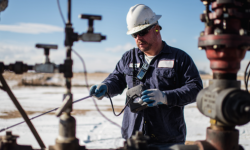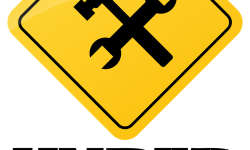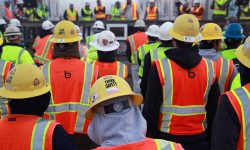THE effectiveness of workplace safety laws is one of the great success stories in modern Australian society. There has been a genuine shift in workplace culture driven by government policy, strong legislation and effective regulators. Workplace safety is arguably the key focus for management and for the individual worker. This safety priority is even more apparent in high risk industries, such as oil and gas, mining and construction.
In my view, it is fair to say that the Australian approach to managing and regulating workplace safety is world class, and in some areas, we lead the world. But when it comes to the application of workplace health and safety regulations and standards to the maritime industry, the Australian approach is fragmented, unnecessarily complex and in some situations, simply unworkable. Some of that complexity is due to our constitutional arrangements, with States and the Commonwealth jurisdictions overlapping. But a significant proportion of the complexity is simply unnecessary, and leads to confusion on board vessels working around the Australian coast.
An example is vessels involved in construction, dredging and similar project based activities. Such vessels are usually foreign-flagged, and often have a mix of Australian and foreign crew. Such vessels have a multiplicity of laws, codes and standards applying to them, to the confusion of all, but especially to the crew on the vessel. Seafarers need a practical answer to the questions: what standard applies and what does it require me to do?
Conflict of Laws
Foreign-flagged vessels in Australian ports are an everyday sight, and the usual comings and goings of such vessels generally does not excite questions of the application of Australian laws.
It is a legal fact that ships have a multiplicity of laws applying from a range of sources when visiting a port: the law of the flag state apply laws relating to licensing, ship safety and ship operating procedures; the law of the port state applies requirements on reporting, pilotage, marine pollution and so on.
The application of WHS laws to such vessels is generally well understood, with the usual law of the Flag State applying unless there is a reason for Australian WHS laws to apply, such as when stevedores are working the ship.
This is known as the Internal Economy Rule, and is generally respected by courts. That is, the laws of the Flag State, which apply on board the vessel wherever it is in the world, continue to apply on board unless there is a good reason for Australian law to apply. In the words of the Federal Court:
The question thus becomes whether the interests of the coastal State are engaged such as to attract the operation of its legislation upon a particular subject to the visiting ship.
Flag Rules – ISM Code
The International Ship Management Code (ISM Code) is given effect by Chapter IX of SOLAS, and is intended to ensure safety of life and property at sea. The ISM Code requires vessels to have a Safety Management System (SMS), and the SMS will provide for safe working procedures, such as mooring, confined space entry, hot work, emergencies and rescues and so on.
In short, the vessel must have a comprehensive suite of workplace safety procedures captured in an SMS. The SMS is verified by Class Surveyors and audited by Flag State Inspectors. Further, AMSA has jurisdiction under the Navigation Act 1912 to monitor compliance through Port State Control inspections. Indeed, ISM Code deficiencies accounts for 13% of AMSA’s PSC detentions.
Commonwealth OHS Laws
The Commonwealth’s Occupational Health and Safety (Maritime Industry) Act 1993 (OHS(MI) Act) also provides for a suite of OHS obligations, codes and standards to the Australian maritime industry. The Inspectorate is AMSA and the ultimate regulator is the Seafarers Safety, Rehabilitation and Compensation Authority (Seacare).
The OHS(MI) Act provides for a range of obligations and powers, including prohibition notices, and a requirement for Health and Safety Representatives on board. Importantly, the application of the OHS(MI) Act is quite broad, and includes:
- Australian registered ships;
- Ships with a general coastal trading licence (under the Coastal Trading (Revitalised Australian Shipping) Act 2012;
- A ship that has a majority of Australian residents on board and which is operated by a person with their principal place of business in Australia.
Many foreign-flagged vessels involved in dredging and other construction projects meet one or more of these criteria, resulting in the application of the OHS(MI) to the ship on top of the ship’s own Flag State laws and ISM procedures.
State and Northern Territory (NT) WHS laws
To add to the complexity, State and NT Workplace Health and Safety Laws may also apply depending on the circumstances. For example, on the Ichthys project in Darwin, much of the work was done in waters internal to the Northern Territory, and many of the crew members were NT residents, resulting in a clear connection with the NT and the application of NT WHS laws.
The consequence is that there then becomes a third layer of laws, obligations, codes and standards that apply to the internal safety management of the vessel.
Commonwealth & State Cooperation
Seacare, AMSA and the various State and NT Workplace Health and Safety regulators have anticipated the potential conflict associated with both OHS(MI) Act and State and NT laws applying to vessels concurrently. The Commonwalth and States/NT have entered into memoranda of understanding (MoU) on the practical application of such laws. Unfortunately, the MoUs are not readily available, and their terms are not widely understood.
Consequently, from the point of view of the Master of a foreign-flagged ship working in Australia, the issue of what WHS laws apply, to what extent, and the identity of the relevant regulator, are questions of significant uncertainty.
Issues
You may be asking yourself, so what? What is the problem with several sets of laws applying to ensure safety on board the vessel. Maybe that is even a good thing?
From the point of view of the Master of a foreign-flagged vessel, for whom English is probably a second language, and who is not familiar with Australian workplace safety culture, then it is a big problem, especially as you do not know:
- What standards and operating procedures are to apply;
- The training and certification required to, for example, work at heights;
- Who to report to and which investigative authority might come on board in the event of an incident;
- The relationship with workers’ compensation arrangements and insurance.
Confined Spaces
A small illustration might suffice to describe the problem. Entering a confined space on board a ship is a high-risk activity, and each jurisdiction (Flag State, Commonwealth and State/NT) provides for the relevant standards and procedures to be mandatorily followed. The difficulty is that the requirements differ in many respects, such as:
- The definition of a confined space differs. The Vessel’s SMS may define a space as not being confined, but the Commonwealth Standard can say the opposite, resulting in a completely different legal and practical requirement for entering that space;
- The training for international seafarers for confined spaces is included in their certification as seafarers. In Australia, additional specialised training is required;
- The Vessel’s SMS procedures for entering confined spaces, and the requirements for rescue arrangements, will differ substantially from Australian requirements for most Vessels.
Conclusion
The application of WHS laws to foreign-flagged ves-sels working in Australia is fragmented, unnecessarily complex and in some situations, unworkable. Whilst the safety objective is laudable, seafarers need practical guidance on safety procedures to be safe. If the vessel’s SMS procedures are to be overridden by Australian laws, then clear guidance needs to be provided to Vessels to enable them to comply.
WORKPLACE HEALTH AND SAFETY REPORT by Captain John Kavanagh. Available from <https://www.lloydslistaustralia.com.au/lla/market-sectors/specialist-shipping/WORKPLACE-HEALTH-AND-SAFETY-REPORT-543432.html> [November 23 2016 - 10:00:00] Photo Credit: By U.S. Navy photo by Mass Communication Specialist 3rd Class Marc Rockwell-Pate [Public domain], via Wikimedia Commons









